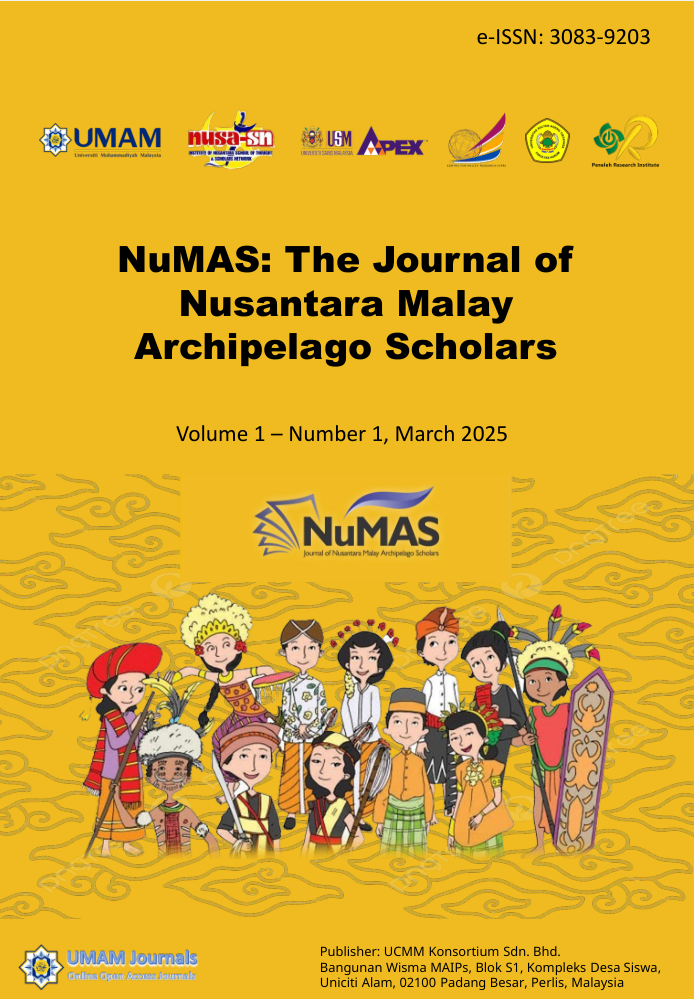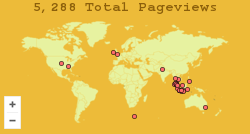Green Innovation from Nusantara: Economic and Environmental Potential of Bambu Betung and Kayu Ori-Based Tableware
DOI:
https://doi.org/10.63088/kpng7b78Keywords:
Bamboo-Based Products, Circular Economy, Eco-friendly Tableware, Green Economy, Sustainable InnovationAbstract
Purpose: This paper explores the potential of Bambusa Betung (bamboo) and Kayu Ori (local wood) as sustainable and environmentally friendly alternatives in the production of consumer goods, with a specific focus on disposable tableware and eco-friendly utensils.
Methods: Using a case study approach, the research examines the production processes, market acceptance, and environmental impact of these materials within Indonesia's growing green economy.
Results: The study highlights local businesses and industries successfully integrated bamboo and Kayu Ori, demonstrating how these materials offer significant advantages in terms of reducing carbon emissions, minimizing plastic waste, and supporting the principles of the circular economy. The research also delves into the role of innovation in enhancing the durability and functionality of bamboo and wood products, exploring their diverse applications in packaging, cutlery, and other biodegradable items. As the demand for sustainable products increases globally, the use of these materials offers a viable solution for reducing environmental harm while providing local businesses with opportunities to tap into eco-conscious markets.
Conclusions: The study reveals that incorporating bamboo and Kayu Ori into production processes not only contributes to environmental sustainability but also presents considerable economic benefits for local communities. By fostering a green economy, these materials provide a means for small and medium enterprises to thrive while promoting social responsibility. The paper concludes with strategic recommendations to enhance production, scalability, reduce production costs, and encouraging broader adoption in both local and international markets, ultimately facilitating the transition towards a more sustainable and circular economy in the Nusantara region.
Downloads
References
Amin, A., Rafiqa, R., Prawira, M. R., & Hadijah, S. (2019). Program Pengembangan Desa Mitra (PPDM) untuk mewujudkan Desa Ekowisata Bambu Alu di Desa Alu, Kab. Polewali Mandar, Sulawesi Barat. Abdimas Toddopuli: Jurnal Pengabdian Pada Masyarakat, 1(1), 28–40.
Chen, X., Chen, F., Jiang, H., Wang, J., Li, Y. X., & Wang, G. (2023). Replacing Plastic with Bamboo: Eco-Friendly Disposable Tableware Based on the Separation of Bamboo Fibers and the Reconstruction of Their Network Structure. ACS Sustainable Chemistry and Engineering, 11(19), 7407–7418.
Devi, R., & Idrus, N. I. (2023). Zero Waste Lifestyle: Gaya Hidup Ramah Lingkungan di Kalangan Anak Muda di Kota Makassar. Emik, 6(1), 22–51.
Dybka-Stępień, K., Antolak, H., Kmiotek, M., Piechota, D., & Koziróg, A. (2021). Disposable food packaging and serving materials—trends and biodegradability. Polymers, 13(20).
Ekawati, D., Karlinasari, L., Soekmadi, R., & Machfud, M. (2022). The status of bamboo research and development for sustainable use in Indonesia: A systematic literature review. IOP Conference Series: Earth and Environmental Science, 1109(1).
Green, V. E. A., & Erasmus, A. C. (2024). Adopting a green strategy and related practices: Lessons from small food establishments in an emerging economy. Cleaner Production Letters, 7.
Hantoro, M., Hantoro, M. R., & Soewito, B. M. (2018). Eksplorasi Desain Kemasan Berbahan Bambu sebagai Produk Oleh-oleh Premium dengan Studi Kasus Produk Makanan UKM Purnama Jati Jember. Jurnal Sains Dan Seni ITS, 7(1), 67–71.
Hendarsh, F. S. (2023). Kerja Sama Denmark-Indonesia: Implementasi Environmental Support Programme Phase 3 (ESP3) Dalam Pengelolaan Sampah Dengan Teknologi Refuse Derived Fuel (RDF).
Hermala, I., Sunitiyoso, Y., & Sudrajad, O. Y. (2025). International Journal of Energy Economics and Policy Green Financing Using Islamic Finance Instruments in Indonesia: A Bibliometrics and Literature Review. International Journal of Energy Economics and Policy |, 15(1), 239–248.
Hussain, S., Akhter, R., & Maktedar, S. S. (2024). Advancements in sustainable food packaging: from eco-friendly materials to innovative technologies. Sustainable Food Technology, 2(5), 1297–1364.
Irwansyah, M. R., Rustini, N. K. A., Wulandari, P. R., Yasa, I. N. M., & Saskara, I. A. N. (2023). Analysis of Sustainability of Bamboo Handicrafts: Investigation of Welfare and Its Supporting Variables. E3S Web of Conferences, 440.
Islam, A. I. M. J., Rahman, H. U., Mushfiquzzaman, M., Ali, S. M., Alghababsheh, M., & Moktadir, M. A. (2025). Sustainability drivers to circular economy integration into the healthcare supply chain to address waste: Implications for net-zero emission. Journal of Cleaner Production, 490, 144742.
Khomsah, S., Nugraha, N. A. S., Marlini, W., Karima, H. Q., & Hendrawardani, B. (2023). Pelatihan Dan Pendampingan Perajin Bambu Desa Grujugan Untuk Meningkatkan Kualitas Irat Dan Diversifikasi Produk. JPM: Jurnal Pengabdian Masyarakat, 4(1), 43–49.
Komariah, A., Fikri, R. U., Fiana, M., Ningsih, R., Nuryanto, U. W., Subroto, D. E., Muti’ah, E., Malinda, T., Romlah, S., & Maharani, S. (2024). Pemanfaatan E-Commerce dalam Pemasaran Kerajinan Bambu di Kelurahan Pasuluhan, Walantaka - Kota Serang. AJAD: Jurnal Pengabdian Kepada Masyarakat, 4(3), 517–524.
Kusumaningtyas, M., Zaki, I., Herianingrum, S., & Nafik Hadi Ryandono, M. (2022). Preparing Future’s Community Empowerment: A Quantitative Study of The Correlation Between Empowerment And Human Resources In Ranu Pani And Sanan. Perisai.Umsida.Ac.Id, 6(2), 106–112.
Long, L., Minghui, Y., Wenjing, Y., Yulong, D., & Shuyan, L. (2023). Research advance in growth and development of bamboo organs. Industrial Crops and Products, 205, 117428.
Lybæk, R., & Kjær, T. (2024). How Can Circular Economy Strengthen the Recycling of Plastic Packaging Wastes? Exploratory and Qualitative Case Study of the Danish Plastic Industry. Environmental Research, Engineering and Management, 80(3), 86–98.
Marsh, K., & Bugusu, B. (2007). Food packaging - Roles, materials, and environmental issues: Scientific status summary. Journal of Food Science, 72(3).
Maulana, A., & Putra, C. I. (2024). Pakar Unpad Nilai Generasi Z Lebih Pilih Gunakan Produk Ramah Lingkungan. https://www.unpad.ac.id/2024/01/pakar-unpad-nilai-generasi-z-lebih-pilih-gunakan-produk-ramah-lingkungan/
Okfrianti, Y., Herison, C., Fahrurrozi, F., & Budianto, B. (2024). Identification of The Antioxidant Activity of Bamboo Shoots a Raw Material for Manufacturing Lemea. AGRITEPA: Jurnal Ilmu Dan Teknologi Pertanian, 11(1), 91–98.
Parameswara, A., Saskara, I. A. N., Utama, I. M. S., & Setyari, N. P. W. (2023). Exploring Cultural Value and its Sustainability of Balinese Handwoven Textiles. Textile: The Journal of Cloth and Culture, 21(1), 174–197.
Ritonga, M. A., Syamsuardi, Nurainas, & Damayanto, I. P. G. P. (2024). Diversity Status of Bamboo in Sumatra: A Review. Journal of Tropical Biodiversity and Biotechnology, 9(4).
Sawarkar, A. D., Shrimankar, D. D., Sahu, S. K., Singh, L., Bokde, N. D., & Kumar, M. (2023). Commercial Clustering of Indian Bamboo Species Using Machine Learning Techniques. 2023 2nd International Conference on Paradigm Shifts in Communications Embedded Systems, Machine Learning and Signal Processing, PCEMS 2023.
Setiawan, I. (2021). Potensi pengembangan desain produk bambu Kabupaten Sleman. Productum: Jurnal Desain Produk (Pengetahuan dan Perancangan Produk), Vol 4 No 2.
State of Green. (2020). The Danish Parliament bans free shopping bags to encourage re-use. https://stateofgreen.com/en/news/no-more-free-shopping-bags/
Subekti, P., Setianti, Y., Hafiar, H., Bakti, I., & Yusup, P. M. (2019). Environmental entrepreneurship education: Case study of community empowerment programs in Bandung Barat district, Indonesia. International Journal of Entrepreneurship, 23(2).
Suradja, I., Suwarno, A. S., Kawamura, R., & Kojima, M. (2024). Enhanced Synergies and Collaborative Actions to Combat Plastic Pollution, Including in the Marine Environment. ASEAN Conference on Combating Plastic Pollution. 1-44
WWF. (2021). An eco-wakening: Measuring awareness, engagement, and action for nature. https://www.worldwildlife.org/publications/an-eco-wakening-measuring-awareness-engagement-and-action-for-nature
Zhafira, A. N. (2019). “Sustainable living”, tren ramah lingkungan yang diminati di 2019 - ANTARA News. https://www.antaranews.com/berita/1225384/sustainable-living-tren-ramah-lingkungan-yang-diminati-di-2019.
Downloads
Published
Issue
Section
License
Copyright (c) 2025 Menur Kusumaningtyas, Sri Rahayu

This work is licensed under a Creative Commons Attribution 4.0 International License.
Authors retain copyright and grant the journal right of first publication with the work simultaneously licensed under a Creative Commons Attribution 4.0 International License that allows others to share the work with an acknowledgement of the work's authorship and initial publication in this journal.





